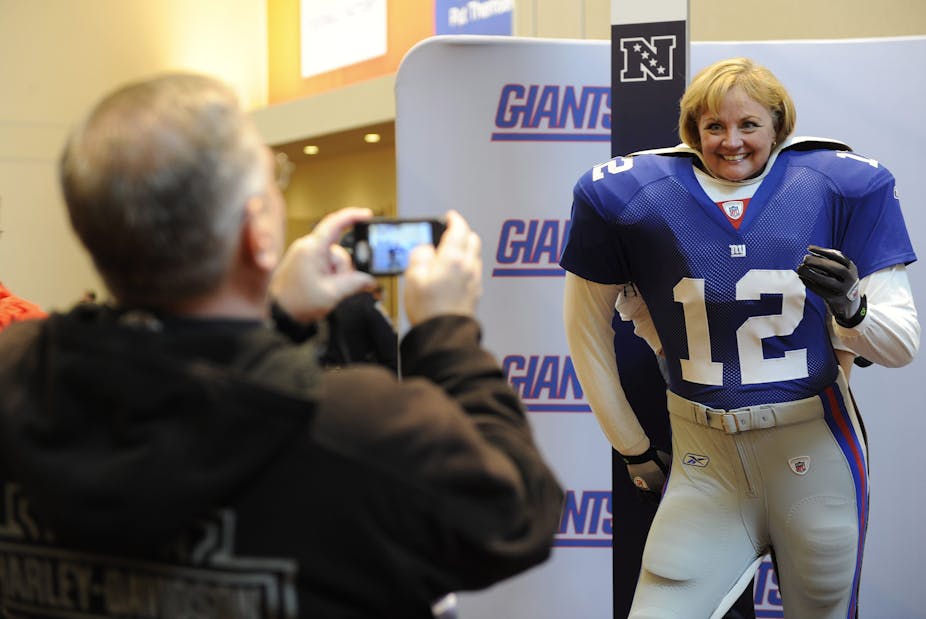The math involved is quite simple. Be it an Australian Open final, Melbourne’s race that stops a nation or the Superbowl, more people want to attend than can fit in the venue. Less simple, however, are the “what now” decisions of ticketless fans.
I was near Federation Square a couple of weeks ago on the night of the men’s Australian Open final. The love interest poked me in the ribs and sarcastically suggested I might want to join the throng of fans. A hideously balmy night, enormous crowds, deck chairs as far as the eye could see and sport on the big screen: a clash of far too many irritants for my liking.
Looking on at the festivities however, and my disdain was quite clearly my problem. These people, ostensibly just watching television outdoors, strangely seemed to be having a thoroughly good time.
Even better than the Federation Square “Live Site”, the American Superbowl showcases just how big the chasm is between the fans that can fit into the Lucas Oil Stadium in Indianapolis and those who have to watch it elsewhere: the stadium seats 70,000; 111 million will watch the telecast.
With the slimmest of slim possibilities of scoring a ticket, the vast majority of football fans have to resign themselves to the broadcast. While for me, I’d think that the comfort of one’s couch, and the cleanliness of one’s own toilet would sway stay-at-home spectatorship, for many fans it’s nowhere enough to just watch the telecast: the experience isn’t complete without also being near the venue.
Vuvuzelas, flares and hooliganism top my list of sports-related behaviour that I’ve never understood. Tailgating needs to be added to the list. Tailgating, car boot parties and fan zones: gathering close to the venue when you can’t quite get in it.
In the US, before games, after games, and oftentimes as a complete substitute for games are tailgate parties: festivities held around the boot of a car where meat is grilled, alcohol imbibed and the carpark ambience greedily lapped up. Ticketless fans reputedly even travel interstate to games just to participate in the carpark splendour.
The same phenomena has taken off in Australia in carparks of race tracks.
At the Federation Square Live Site, those fans were sitting out in the sun for hours long before the match started. In the US, some tailgaters arrive the night prior and sleep in their car. Just what explains subjecting oneself to such inconveniences?
Perhaps like birthdays and anniversaries and elections and awards ceremony telecasts, for many people these are just excuses to have a party. Sure, the results might be interesting, but it’s largely just background noise.
Is it about being part of a community? That rather than sitting on your comfy couch eating nachos in front of your own TV, there’s joy to be had in being with likeminded sports fans? That cheering, chest-beating and placard-pumping just seems a little weird when done home alone?
Perhaps there’s something desirable about weather extremes. The sun was roasting those tennis fans at Fed Square: surely an indoor venue would have been cooler. For the American tailgaters, much of the NFL season plays out in winter, this year’s Superbowl and it’s predicted to be a nippy 6 degrees with a good chance of rain. Any indoor venue would be warmer. But maybe this is part of the appeal: fans battling the elements like suburban survivalists – even if thoroughly self-inflicted.
Myself and I’d prefer climate control, breathing space and not having a perfectly pleasant afternoon marred by sport, but then I’m quite possibly missing the point.

